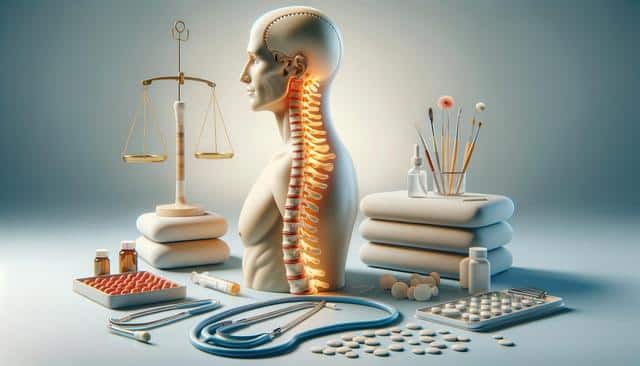What to Expect When Considering Spinal Decompression
Spinal decompression relieves pressure on discs and nerves, often used for herniated discs or sciatica. Expect gentle traction therapy or surgical options, with recovery plans tailored to pain levels and mobility goals.

Understanding Spinal Decompression Therapy
Spinal decompression therapy refers to techniques designed to relieve pressure on the spinal discs and nerves. This approach is often considered for individuals dealing with chronic back pain, herniated or bulging discs, degenerative disc disease, or sciatica. There are two primary types of spinal decompression: non-surgical and surgical. Non-surgical methods typically involve motorized traction systems that gently stretch the spine, promoting the repositioning of discs and improving nutrient flow to affected areas. Surgical decompression, on the other hand, may be recommended in more severe cases where conservative treatments have not been effective.
The goal of both types is to alleviate pressure, reduce pain, and restore function. Patients undergoing non-surgical decompression often experience a series of treatment sessions spread over several weeks. Each session usually lasts between 30 to 45 minutes and is typically pain-free. Surgical options, such as laminectomy or discectomy, involve the removal of bone or disc material compressing the nerves and require a more extended recovery period.
Who Is a Candidate for Spinal Decompression?
Not everyone experiencing back pain is a suitable candidate for spinal decompression therapy. A thorough evaluation, including physical exams, imaging tests like X-rays or MRIs, and a review of medical history, is essential to determine eligibility. Candidates tend to include those with:
- Herniated or bulging discs
- Degenerative disc conditions
- Chronic lower back or neck pain not responding to other treatments
- Pinched nerves or sciatica symptoms
However, individuals with certain conditions may need to avoid spinal decompression, particularly if they have spinal fractures, tumors, infections, or advanced osteoporosis. Pregnant individuals are generally advised against non-surgical decompression treatments. Always consult with a licensed healthcare provider to determine if spinal decompression is appropriate for your situation.
What Happens During a Non-Surgical Decompression Session?
Non-surgical spinal decompression is a relatively simple outpatient procedure. Patients lie on a specialized table, either face up or face down, depending on the area being treated. A harness is placed around the pelvis and trunk, and the table is programmed to provide controlled traction. This gentle pulling separates the vertebrae slightly, creating negative pressure within the disc. This process can help retract displaced disc material and allow healing nutrients and oxygen to flow more freely into the disc space.
Most patients describe the sensation as a gentle stretch rather than anything painful or uncomfortable. Typical treatment plans include multiple sessions over the course of 4 to 6 weeks. The frequency and duration are tailored to the individual’s condition and response to therapy. In many cases, non-surgical decompression is combined with complementary therapies such as:
- Physical therapy exercises
- Massage therapy
- Electrical stimulation
- Ultrasound treatments
The combination of these therapies can enhance the effectiveness of decompression and contribute to longer-lasting pain relief.
Recovery and Outcomes After Surgical Decompression
For individuals undergoing surgical spinal decompression, the recovery process can vary significantly depending on the specific procedure performed and the patient’s overall health. Common surgical procedures include laminectomy, discectomy, and spinal fusion. These surgeries are typically done under general anesthesia and may require a hospital stay ranging from one to several days.
Postoperative recovery includes pain management, physical rehabilitation, and gradual return to daily activities. Patients are often advised to avoid heavy lifting, bending, or twisting for several weeks. A structured physical therapy regimen is usually introduced to help regain strength and flexibility. Outcomes from surgical decompression can be positive, especially for those suffering from severe nerve compression. Many patients report improved mobility and reduced pain over time, though success rates can vary.
It’s important to maintain realistic expectations. While surgery can provide substantial relief, it may not eliminate all symptoms, and some degree of discomfort may persist. Long-term success often depends on lifestyle adjustments, including staying active, maintaining a healthy weight, and practicing good posture.
Managing Expectations and Long-Term Care
Whether undergoing non-surgical or surgical spinal decompression, managing expectations and committing to long-term care is crucial. Not all patients experience immediate or complete relief. It’s common for pain to gradually diminish over time, particularly when decompression is part of a comprehensive treatment plan. Consistent follow-up with healthcare providers is essential to monitor progress and make adjustments as needed.
Long-term care strategies that support spinal health include:
- Regular low-impact exercise like walking or swimming
- Strengthening core muscles to support the spine
- Ergonomic workplace adjustments
- Healthy eating habits to reduce inflammation and support tissue repair
Staying proactive with spinal care helps prevent future flare-ups and maintains the benefits of decompression therapy. For many, spinal decompression—when appropriately recommended and properly followed—can be an effective part of a broader strategy to manage chronic back pain and improve quality of life.
Conclusion: Is Spinal Decompression Right for You?
If you’re dealing with persistent back or neck pain, spinal decompression could be a valuable option to explore. Whether you’re considering non-surgical sessions or evaluating the potential for surgical intervention, understanding what the process involves helps you make informed decisions. Speak with a qualified healthcare provider to assess your condition and determine the most suitable path forward. With proper guidance and commitment, spinal decompression can be a meaningful step toward greater mobility and pain relief.